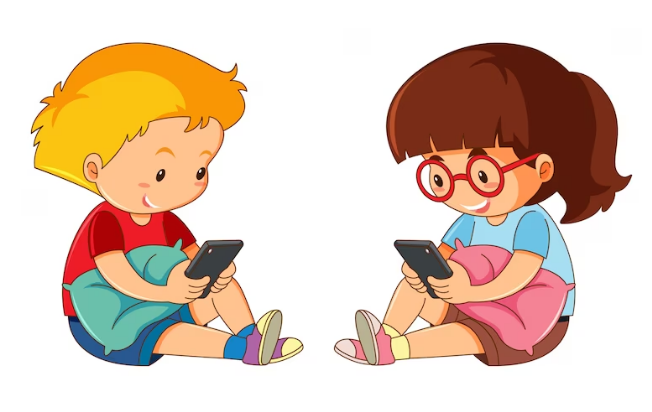How Do You Create Educational Content?
Creating educational content for children has never been more accessible and important. Educational content supports a child’s cognitive development and enhances their creativity, critical thinking, and problem-solving skills.
Websites dedicated to this purpose have revolutionized how we deliver educational material to kids, making it more interactive and engaging. Aside from that, you can enhance your content by providing videos so kids can easily understand; as such, consider Vidico’s content agency to add another layer of engagement to your educational materials.
Now, we’ll share the key steps to create educational content for children.
Understanding Your Audience
The first step in creating educational content for kids is understanding your target audience. Children have varying needs and learning styles depending on their age and developmental stage. You must consider their age, interests, and educational level to create content that resonates with them. With this understanding, you can adapt your content specifically to their needs, guaranteeing that it is informative and interests them.
Set Clear Educational Goals
Before you start creating content, establish clear educational goals. What do you want children to learn or achieve by engaging with your content? Clearly define your learning objectives and ensure your content aligns with these goals. Whether teaching math concepts, enhancing language skills, or fostering creativity, having well-defined objectives will guide your content creation process.

Mental Math App for Kids
The mental math games are all about the ability of thinking and solving a problem in your head. It builds that critical thinking in a child’s mind and makes him able to deduce solutions to different problems.
Interactive and Engaging Content
One of the most significant advantages of digital educational content is its interactivity. Interactive content captivates children’s attention and encourages active learning. Utilize interactive elements like quizzes, games, puzzles, and animations to make learning fun and engaging. Using an AI avatar video maker like invideo AI, educators can create lifelike virtual instructors that explain concepts in a visually engaging and relatable manner, making lessons more dynamic and memorable for young learners.
Visual Appeal
Children are visual learners, so making your educational content visually appealing is crucial. Incorporate colorful graphics, animations, and illustrations to make the learning experience more enjoyable. Visual elements enhance engagement and aid in the comprehension and retention of information.
Keep It Age-Appropriate
Tailor your content to the age group you’re targeting. Too advanced or simple content can lead to disinterest or frustration. Use age-appropriate language, concepts, and activities to ensure children can easily grasp and engage with the material.
Encourage Critical Thinking
Effective educational content should encourage critical thinking and problem-solving skills. Pose questions, provide challenges, and create scenarios that require children to think and analyze. Encourage them to explore and find solutions independently, fostering a sense of accomplishment and self-reliance.
Include Real-Life Examples
Children relate better to educational content when they can see its real-life relevance. Incorporate real-life examples and practical applications of the concepts you’re teaching. Use relatable scenarios that children can connect with to make the content more meaningful. For instance, if you’re teaching math, use everyday situations like shopping or cooking to demonstrate mathematical concepts.
Regular Updates and Feedback
Continuously update your educational content to keep it fresh and relevant. Listen to feedback from parents, teachers, and students to identify areas for improvement. Be open to making necessary changes based on feedback to enhance the learning experience. Regularly updating content also shows your commitment to providing valuable educational resources.
Accessibility and Inclusivity
Ensure your educational content is accessible to all children, including those with disabilities. Consider incorporating closed captions, text-to-speech functionality, and adjustable font sizes to accommodate a diverse audience. Inclusivity is essential to ensure all children have equal opportunities to learn and thrive.
Collaborate with Experts
To create high-quality educational content, consider collaborating with experts in the field. Educational psychologists, curriculum designers, and experienced educators can provide valuable insights into effective teaching methods and content development. Their expertise can help you create content that aligns with educational standards and best practices.
Promote Responsible Screen Time
While digital educational content can be beneficial, promoting responsible screen time for children is essential. Set guidelines and limits on screen time to ensure children have a balanced routine, including physical activity, social interaction, and other offline activities. Educational content should complement a well-rounded upbringing rather than replace it.
Measure and Assess Learning
Implement assessment tools within your educational content to measure children’s progress and understanding. Use quizzes, tests, or interactive activities to evaluate their knowledge and skills. This data can help parents and educators track a child’s development and identify areas needing further attention.
Engage Parents and Educators
For a child’s educational development, the involvement of both parents and educators is critically important. Provide resources and guidance to help them support children’s learning outside of the digital environment. Create parent-teacher guides, conduct webinars, or offer suggestions for reinforcing the lessons learned through your educational content.
Final Remarks
Ultimately, the goal of educational content for kids should be to instill a love for learning. Encourage curiosity, exploration, and a passion for acquiring knowledge. Make learning enjoyable and something children look forward to. When children develop a genuine interest in learning, they become lifelong learners.









